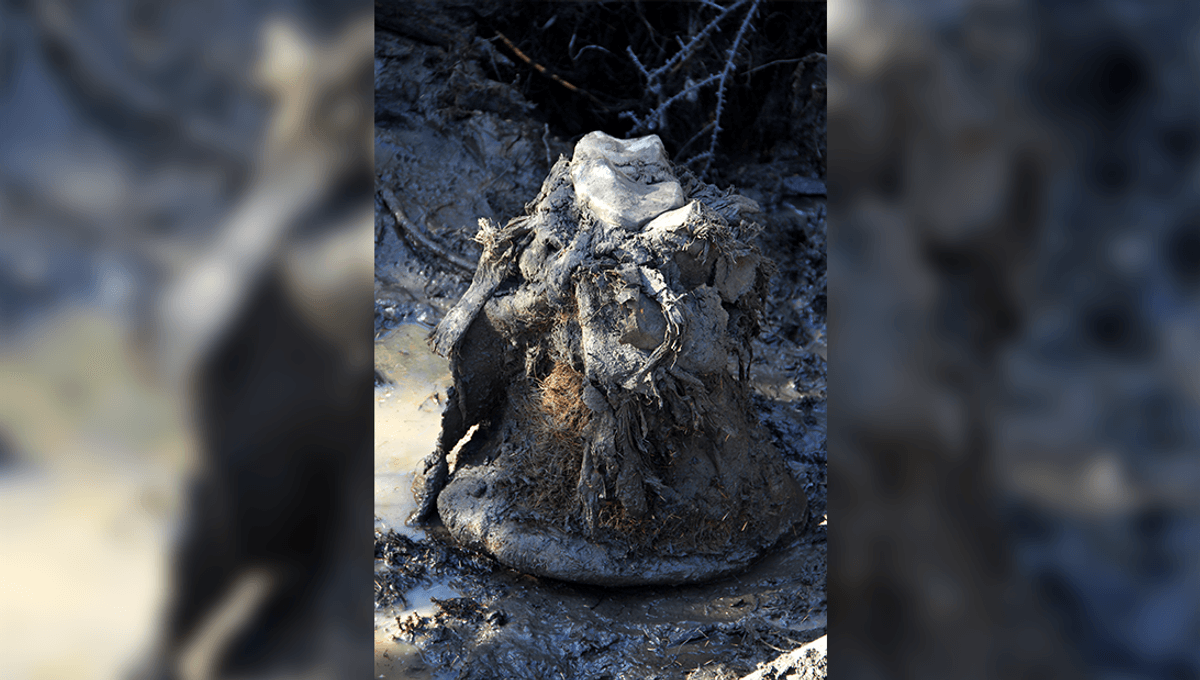
Freeze-dried skin samples of a woolly mammoth found in Siberia have enabled scientists to create a 3D reconstruction of 52,000-year-old chromosomes. The achievement is a world-first for ancient DNA, and reveals which genes were active in the skin cells when the mammoth was alive.
Shortly after the woolly mammoth died it spontaneously freeze-dried thanks to the weather, preserving its nuclear architecture in a dehydrated state that made it possible to survive for millennia. Fast forward to 2018, and the mammoth’s remains were discovered by humans in northeastern Siberia.
Armed with the uniquely well preserved remains, a team of scientists extracted DNA from a skin sample taken behind the mammoth’s ear. This was then analyzed using a method known as Hi-C that can identify sections of DNA that were likely interacting with each other when the animal was alive.
“Imagine you have a puzzle that has three billion pieces, but you don’t have the picture of the final puzzle to work from,” said corresponding author Marc A Marti-Renom, an ICREA research professor and structural genomicist at the Centre Nacional d’Anàlisi Genòmica (CNAG) and the Centre for Genomic Regulation (CRG), in a statement. “Hi-C allows you to have an approximation of that picture before you start putting the puzzle pieces together.”
Aided by the genomes of present-day elephants, they were able to use Hi-C to piece together a 3D recreation of the mammoth’s genome for the first time ever. It revealed they had 28 chromosomes, which is the same as Asian and African elephants, and preserved details as minute as the nanoscale loops connecting transcription factors and genes.
“For the first time, we have a woolly mammoth tissue for which we know roughly which genes were switched on and which genes were off,” explained Marti-Renom. “This is an extraordinary new type of data, and it’s the first measure of cell-specific gene activity of the genes in any ancient DNA sample.”
The mammoth’s meaty genetic material is being described as a new type of fossil that dwarfs previous ancient DNA discoveries, marking the first time a karyotype has been determined for an ancient remains.
As for what we might be able to do with all that genetic data, it’s possible this could be a step in the right direction for the scientists trying to de-extinct the mammoth over at Colossal Biosciences by integrating their active genes into the genome of a modern elephant.
“It’s exciting to see that 3D architecture can be preserved in ancient samples,” Colossal’s Head of Biological Sciences and Mammoth Lead Eriona Hysolli – who wasn’t involved in the study – told IFLScience. “This will help move toward a complete de novo assembled mammoth genome, which could reveal features of the genome that might be relevant to mammoth de-extinction.”
The study is published in the journal Cell.
Source Link: Woolly Mammoth Skin "Freeze-Dried" For 52,000 Years Delivers First-Ever 3D Chromosomes